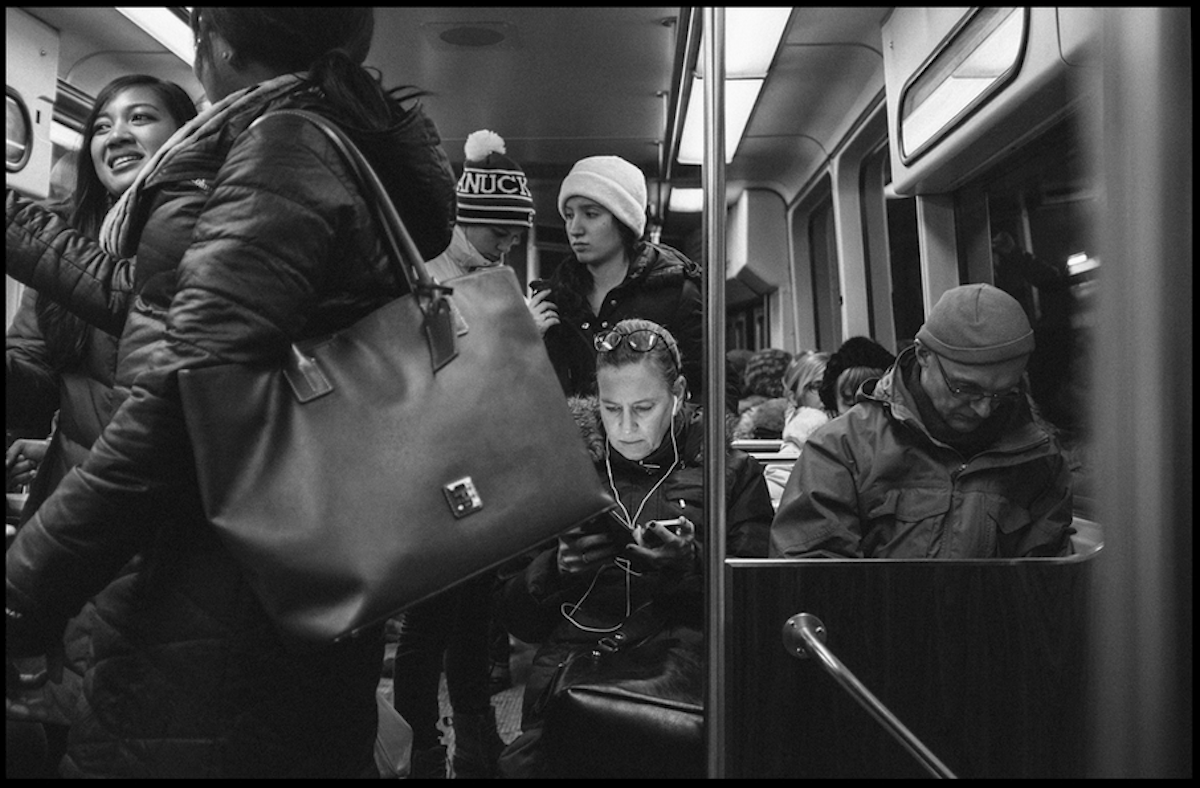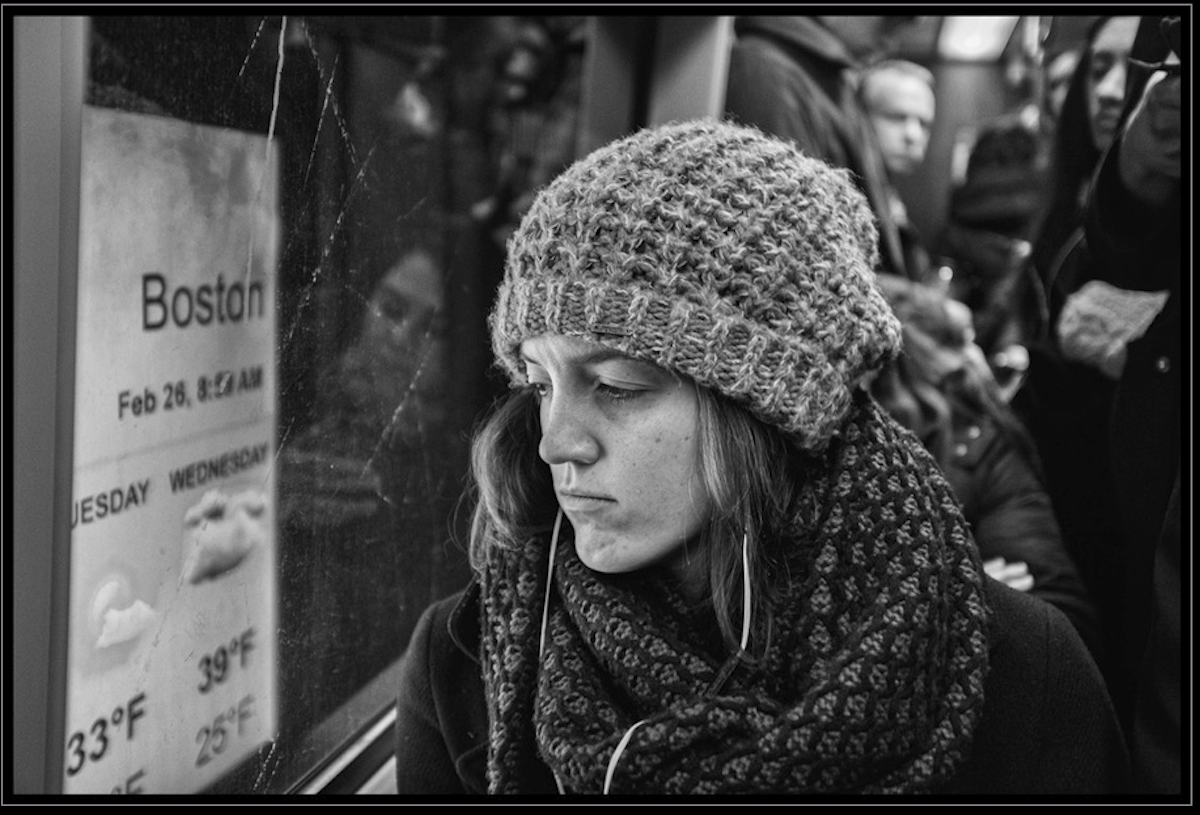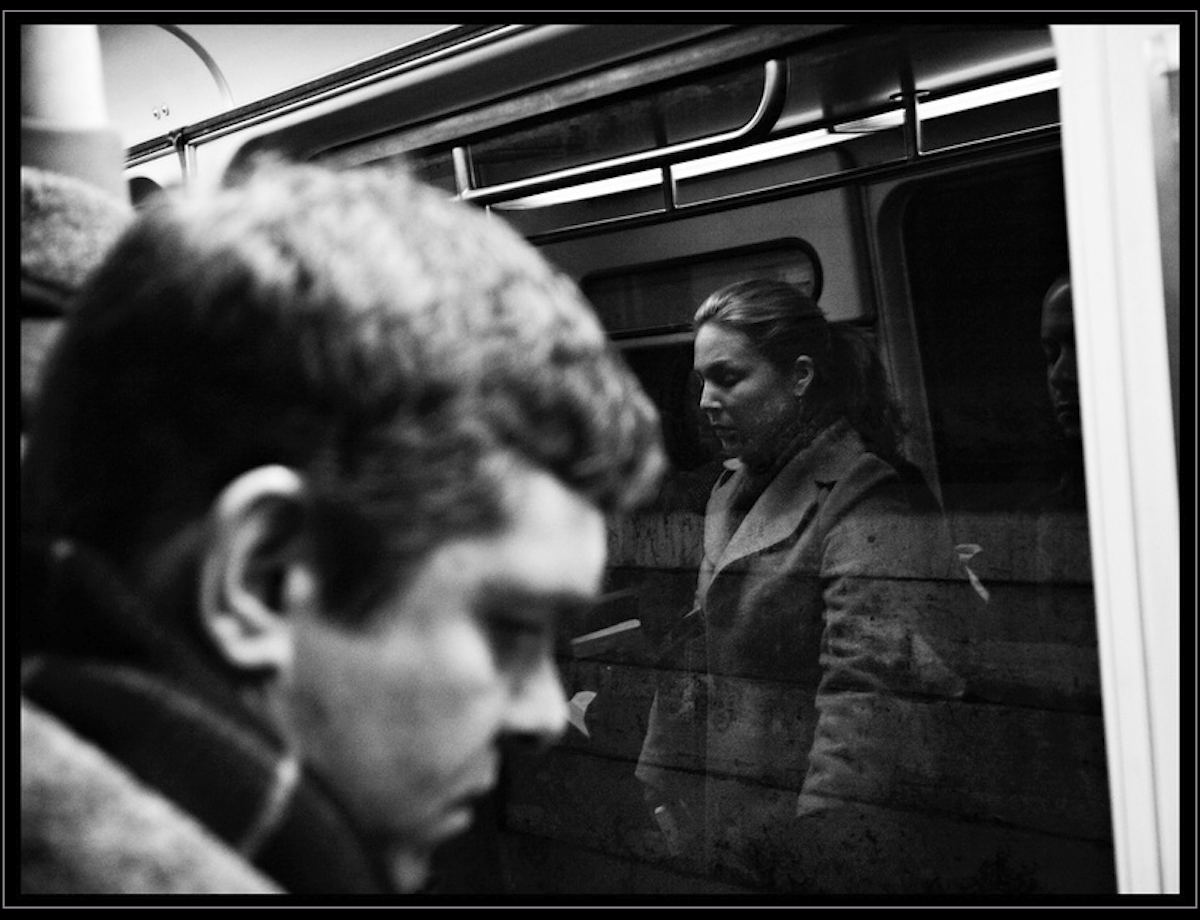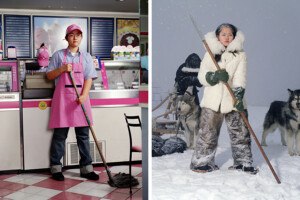Ten Years of Photographing Strangers on the T

Courtesy of B.D. Colen
Those who ride the T day in and day out are adept at escaping. Through books and smartphones, earbuds and streaming music, we find ways to carve out personal space in an inherently public sphere. In 2005, B.D. Colen, who teaches documentary photography and science journalism at MIT, began capturing his fellow passengers’ efforts to be alone while stuffed in crowded trains.
His decade-long project came together earlier this year in an exhibit on the Social Documentary Network titled “Alone, Together.” Colen, 68, shot the bulk of the exhibit while riding what he calls the V Line: Green Line to Park Street, Red Line to Harvard Square, and vice versa. “I tell people who don’t live here that Boston has this bizarre transportation system that’s a bunch of spokes and no wheels,” he jokes.
We sat down with Colen last week to discuss the project, his concerns with the current state of street photography, and issues of privacy in the golden age of surveillance.
You started shooting this project in 2005, before the advent of iPhones, Twitter, and Kindles. Did you see people isolating themselves more intensely or more frequently as technology proliferated over the past decade?
On the T, I don’t think so, because people would either have Walkmans or books or newspapers or magazines beforehand. They were just as isolated when I started doing this, as I saw it. It was print initially, and then the electronic devices took over.
If you go back and look at the first subway project of Walker Evans—he had a camera sewn inside his coat and was surreptitiously shooting people—they look just as isolated as my T riders do. I’m not comparing myself to Walker Evans, but he sort of saw the same thing. It’s not like people sat down and chatted with the people next to them. They were just sort of in their own world.
If I’m sitting on the train and looking at pictures of my niece and nephews on Facebook, is that somehow less isolating because I’m connecting digitally with my family?
I think it’s a matter of isolating yourself from the people around you. It’s people wanting privacy in public. We all want personal space, and we really don’t have any in a place like the T. So we create it for ourselves by going into the device or going into the book or hiding behind the newspaper. And it’s a time of day when we want personal space—you’re on your way to work and your eyes are half open or you’re on your way home from work and your eyes are half closed, and the last thing you want to do is gab with a stranger. At least that’s what I’ve seen over the decade.
I’m not a sociologist, I don’t even play one on TV, I’m a former reporter and I’m a photographer. Whether I think societally we are more isolated because of this phenomenon—that’s a yes and a no. I spend too much time on Facebook, and I now have 900 and something Facebook friends. I don’t even know where many of them came from, let alone who they are. At the same time, I’ve reconnected with people I was a copyboy with at the Washington Post, with people from high school, and not in a profound way, but in a nice way.
Is the camera your way of finding privacy in public? Did you isolate yourself during your commutes by staying behind the lens?
There’s probably some of that. Or it’s a way for me to get inside the privacy of others. Before I started doing this fairly seriously, I would have an iPod or a book or whatever—I was doing what all the other people were doing. These devices shorten the ride. If I’m reading a Kindle or listening to music, I’m at my stop before I even think about it. If I don’t, the damn ride is interminable.
Some of your images feature couples sharing intimate moments. What was your impression of couples finding privacy on the T?
You kind of have a “get a room” impulse half the time. They’re kissing; they’re clearly being intimate as though there’s nobody watching them. And if they were anywhere but the T, a lot of these couples, I think, would not behave this way. But again, when you’re crushed in together, somehow you don’t think anyone is paying attention—it’s a mass, it’s not other people.

Courtesy of B.D. Colen
Do you feel like you’re invading these people’s moment or sharing in it?
Simply documenting it.
What about people who say you’re invading T rider’s privacy?
I believe in the first amendment. You’re in public. You don’t want to be photographed? Don’t go out in public. You’re on 800 videotapes a day if you’re in an urban area with cameras coming out of windows and on corners and whatnot. And anybody who doesn’t think about the fact that they are in the background of countless selfies—you’re in public, you’re in public. It’s not like I have some long telephoto lens and am at the other end of the car. I’m right there.
Do you worry about the loss of privacy in terms of surveillance cameras and red light cameras and such?
I wish there weren’t 800 cameras in Harvard Square. I bemoan the fact that there this is no privacy anymore.
On the other hand, I admire, I revel in the New York street photography from the ’40s and ’50s. I think it’s fabulous. I think street photography today—an awful lot of it is just junk. It’s people thinking if an image has dark shadows, it’s meaningful, or if someone is smoking, it’s meaningful. If I have to see another street photo of someone in a cloud of smoke—I mean come on. Go look at the work of Helen Levitt or Saul Leiter.
So what makes a good street photo?
A photo that tells a story or that you can imagine a story in, or that has some humor, or it surprises you. A photo that has what Bob Woodward, when he was metro editor at the Washington Post, called WTF stories. He wanted a story that you read and it had that what the fuck factor. You want to see that in a street photo—when you look at it and say, what the hell is this? You want something that stimulates you in some way, not just “Oh yeah, it’s a guy smoking.”
Look at Garry Winogrand’s stuff—he’s this ’60s, ’70s, ’80s street photography god who just got some utterly bizarre images. There’s one on Park Avenue, I think, that he somehow got of a guy doing a somersault in the air. He’s got one of a couple in Central Park, it’s an interracial couple, and they are carrying chimpanzees dressed like little kids. There’s a famous photo taken at a zoo with a rhinoceros and this stout older woman with a little hat. It’s just wild stuff. And he was just a ridiculously prolific shooter. When he died, he had thousands of undeveloped TRI-X rolls. But he wasn’t intimidating.
Street photography today has kind of become a trope. Everyone says, “Oh, I do street photography”—particularly young guys. It’s a very young guy thing, it’s a macho thing to get out there and have the mindset of, “you can’t tell me not to take a picture,” or “if you give me the finger, that makes a great picture.” No it doesn’t. That’s just you annoying somebody.

Courtesy of B.D. Colen
Have any T riders given you the finger?
If somebody gives me the finger, I don’t want the picture. When somebody objects or turns away, the moment is ruined and I don’t want it. I don’t even try to shoot it. And that happened very rarely.
But it happened?
I had one confrontation in the entire 10 years, and it was a couple of winters ago. I looked big—I’ve lost 45 pounds—so I weighed over 200 pounds, I had a big down coat on, and I had my Sorel boots on, so I was probably 6’2″. And I was trying to get a picture of a woman with a scarf around her head, and some guy standing near her said, “I don’t want my picture taken. You can’t take my picture.” And I had it. And I said, “Yes I can, it’s something called the first amendment.” And he said, “You can’t take my picture,” and I said, “Oh yes I can. And by the way I wasn’t taking your picture.” And I actually walked up to him, believe it or not. In that sense, I’m the meekest person in the world, but something just went off. And he just backed down. But I wasn’t taking his picture. I didn’t want his fucking picture.
But again, the idea isn’t to invade people’s privacy. You’re in public, and I’m just documenting how people behave under these circumstances. And also it’s giving me something to do on the T. That is the other thing, quite frankly: It was a way to do a project during commuting time. To your earlier question about, is this my way to isolate myself? Yes. Photographers hide behind the camera.
Check out B.D. Colen’s entire “Alone, Together” exhibit at socialdocumentary.net. This interview has been edited for brevity and clarity.


